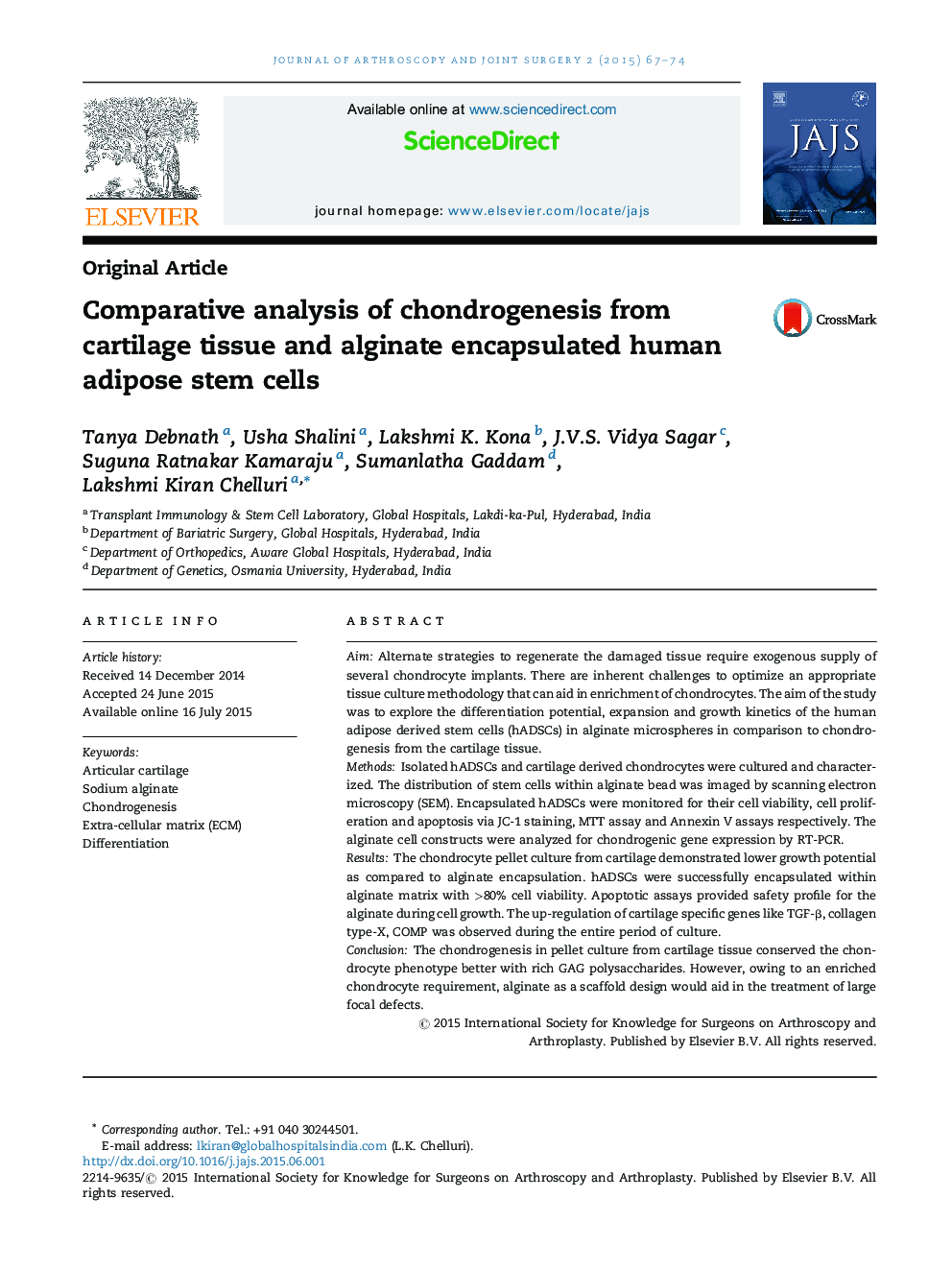| Article ID | Journal | Published Year | Pages | File Type |
|---|---|---|---|---|
| 3245111 | Journal of Arthroscopy and Joint Surgery | 2015 | 8 Pages |
AimAlternate strategies to regenerate the damaged tissue require exogenous supply of several chondrocyte implants. There are inherent challenges to optimize an appropriate tissue culture methodology that can aid in enrichment of chondrocytes. The aim of the study was to explore the differentiation potential, expansion and growth kinetics of the human adipose derived stem cells (hADSCs) in alginate microspheres in comparison to chondrogenesis from the cartilage tissue.MethodsIsolated hADSCs and cartilage derived chondrocytes were cultured and characterized. The distribution of stem cells within alginate bead was imaged by scanning electron microscopy (SEM). Encapsulated hADSCs were monitored for their cell viability, cell proliferation and apoptosis via JC-1 staining, MTT assay and Annexin V assays respectively. The alginate cell constructs were analyzed for chondrogenic gene expression by RT-PCR.ResultsThe chondrocyte pellet culture from cartilage demonstrated lower growth potential as compared to alginate encapsulation. hADSCs were successfully encapsulated within alginate matrix with >80% cell viability. Apoptotic assays provided safety profile for the alginate during cell growth. The up-regulation of cartilage specific genes like TGF-β, collagen type-X, COMP was observed during the entire period of culture.ConclusionThe chondrogenesis in pellet culture from cartilage tissue conserved the chondrocyte phenotype better with rich GAG polysaccharides. However, owing to an enriched chondrocyte requirement, alginate as a scaffold design would aid in the treatment of large focal defects.
